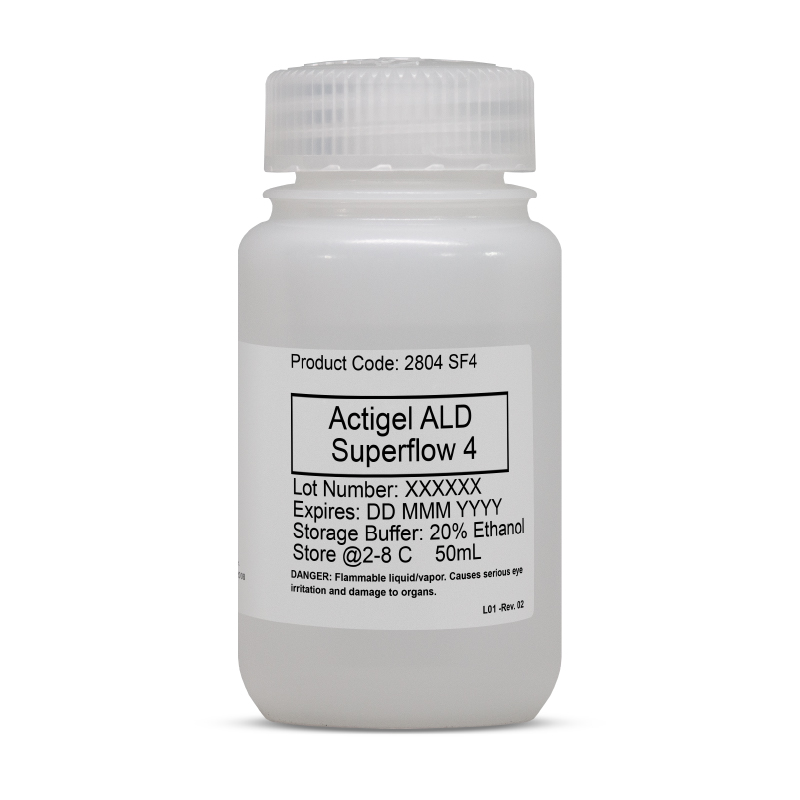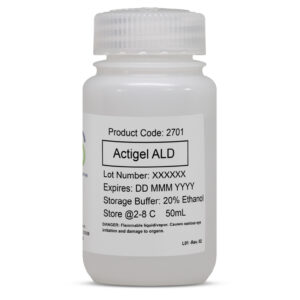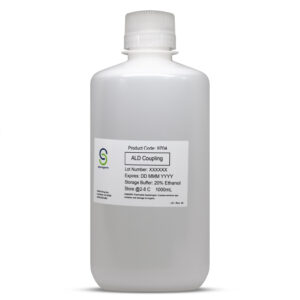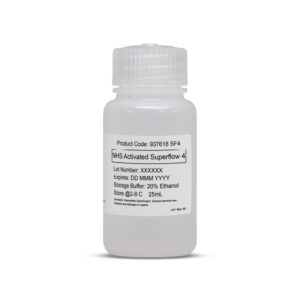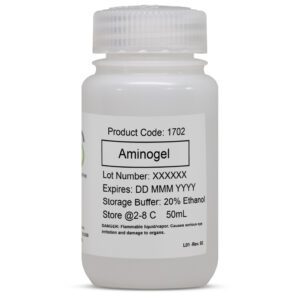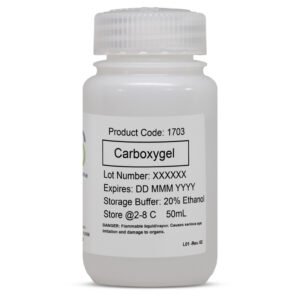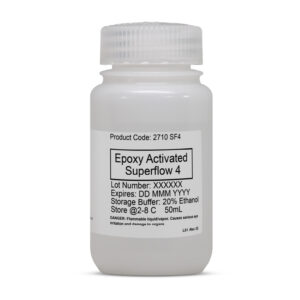Table 1. Resin Characteristics
| Active Group Density | >50 µmole/ml |
| Bead Material
| Agarose |
| Bead Percentage
| 4% |
| Bead Size | 60-160 µm |
| Flow Rate1 | >20 mL/min (>680 cm/hr) @ 25oC |
| pH Stability2 | 2-14* |
| Storage Temperature | 2-8o C |
| Storage Buffer
| 20% Ethanol |
| Form | Slurry |
| Chemical Stability2 | Stable in all commonly used aqueous solutions and buffers. |
| Physical Stability2 | Negligible volume variation due to changes in pH or ionic strength. |
1Linear flow rate = volumetric flow rate (cm3/h)/column cross-sectional area (cm2)
2Data refer to the coupled product, provided that the ligand can withstand the pH or chemical environment. Please note the following: pH stability, long term refers to the pH interval where the medium is stable over a long period of time without adverse effects on its subsequent chromatographic performance. pH stability, short term refers to the pH interval for regeneration and cleaning procedures.
Instructions for Use
Actigel ALD Superflow 4 resin contains a free carbonyl group available for conjugation to a primary amine on a target molecule. The recommended chemistry for conjugation is reductive amination, with the carbonyl carbon on the resin interacting with the nucleophilic nitrogen on the ligand to create a Schiff base. Reduction of the Schiff base to a more stable alkylamine requires a mild reducing agent, like sodium cyanoborohydride (NaCNBH3). This results in a secondary amine that is chemically and biologically stable. The use of the Superflow 4 matrix allows the resin to be used at higher flow rates, 680 cm/hr or greater.
For efficient coupling, the ligand solution must be free of amines, aldehydes, and ammonium salts. Salts or small organic molecules can be removed efficiently using desalting columns, solid phase extraction (SPE) cartridges, or tangential flow filtration (TFF). Dialysis may be appropriate for small volumes, provided that an adequate volume of buffer and number of buffer changes are used. Sterogene Bioseparations manufactures an ALD Coupling Solution which is optimized for use with Actigel ALD Superflow 4. It is free of sodium borohydride, which can reduce the efficiency of the reduction.
The unconjugated beads can be sanitized by mixing in one bed volume of 70% ethanol overnight.
Prior to conjugation, it is advisable to run pilot couplings to optimize loading.
Protocol:
1. Gently dry the beads by suction using a Buchner or sintered glass funnel.
2. Dissolve the protein of interest (if a lyophilized powder) or dilute your protein into an appropriate buffer.
3. Add the protein solution to the resin and gently re-suspend to ensure complete coverage of the beads. Gentle mixing on a rocker or shaker is recommended (do not use a magnetic stirrer). Add 1mL of ALD Coupling Solution for every 5mL of resin. Allow the suspension to continue mixing.
4. Coupling at room temperature typically takes 4-6 hours and coupling in the cold (2-8 °C) may require up to 18 hours.
5. Separate the conjugation buffer from the beads by suction. Measure the ligand concentration by optical density, colorimetric assay, ELISA, or a ligand-specific quantitative assay, and determine the percentage bound to the beads. If coupling is lower than desired, the ligand solution can be added back to the resin to continue coupling.
6. Wash the resin with 10 bed volumes of equilibration buffer.
7. Optional – Free aldehyde groups can be blocked with a primary amine using reductive amination. Three buffers commonly used are 1M ethanolamine, 0.1M glycine, or 0.1M Tris, all are within the pH range of 8–8.2. Add 1mL of ALD Coupling Solution for every 5mL of resin to facilitate the formation of the secondary amine. Incubate 20 minutes at room temperature or one hour at 2-8 °C.
8. Store conjugated beads in a buffer that is appropriate for the ligand at 2-8°C.
For technical service email info@sterogene.com or call (760) 929-0455
To Download Instructions for use:
INST 2701SF4 Actigel ALD Superflow 4
